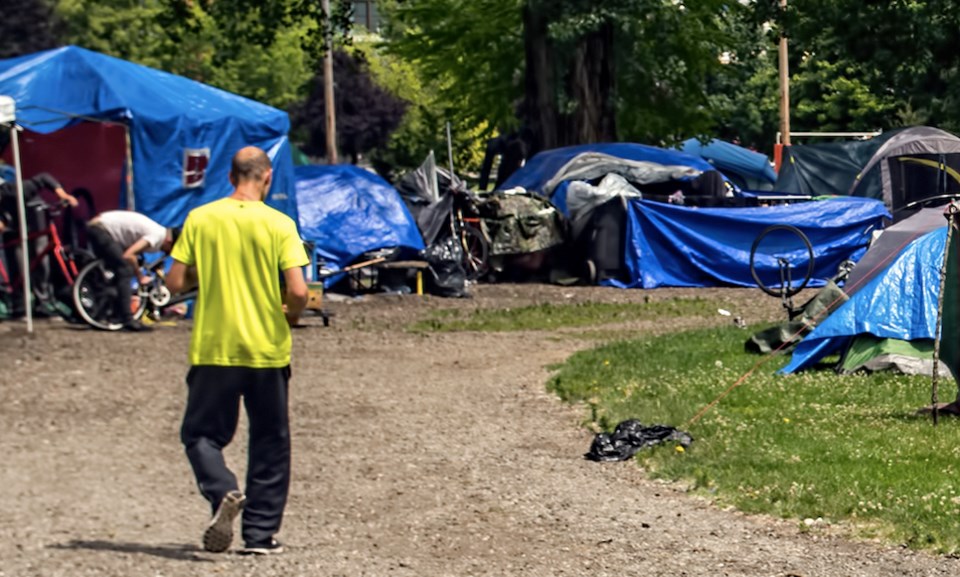After a tent city in Vancouver’s Oppeneheimer Park was shut down this summer, some of the homeless who had been living there were placed in hotels and other temporary housing at public expense.
But it didn’t take long for the tents to begin sprouting up again just a few blocks away in Strathcona Park.
Business owners and residents in the area are alarmed and angry over the increased crime, open drug use, threatening and erratic behaviour, general deterioration of their neighbourhood and falling property values that this encampment has brought to the area.
A citizens group called Stepup is now demanding an audit of how an estimated $360 million that is spent each year, just in the Downtown East Side, is being spent. Whatever strategies are being used to address homelessness, drug addiction and mental health, they aren’t working, says one the group’s spokespersons.
“I think Strathcona has always been a neighborhood on the edge,” said Dallas Brodie, a lawyer and Vancouver spokesperson for Stepup. “But when Oppenheimer Park broke up, they saw the influx. It was immediate, and it was dramatic. And it was scary immediately.
“And there have been some horrible scenes take place down in those parks. Apparently, also, real estate is suffering because no one wants to buy now in these areas. But I think that the biggest thing people are feeling is a loss of a sense of safety in their own community.”
While the homeless problem is most pronounced in Vancouver, it’s by no means limited to Vancouver. It’s also a serious problem in Victoria and Nanaimo.
“There are many people who live in hell on our streets,” said Leonard Krog, the former NDP MLA who is now mayor of Nanaimo. “And they are making it hell for many others.
“It is the greatest source of complaints and concerns in terms of correspondence with mayor and council. And it's probably the most absorbing thing for our local police… our fire departments, the paramedics. They're all feeling pretty stretched, dealing with those who suffer from significant mental health and addiction issues.”
Despite more than 200 social agencies and non-profits operating in in the Downtown East Side, the problem just keeps getting worse, Brodie said. And part of the problem may be that homelessness is viewed too much through the lens of housing stock shortages.
“To our mind, the biggest problem is that we're calling it a homelessness problem,” she said. “But it's not it's not just about homelessness. This is mental illness and drug addiction.”
While some people who are living in tents, on the streets and in temporary shelters are homeless because they simply can’t find affordable housing, it is estimated that half to two-thirds of the homeless population in the Greater Vancouver region have some form of mental health issue, drug addiction, or both.
An estimated 7,655 individuals were identified as homeless in B.C., according to the 2018 Report on Homelessness. Fifty-six per cent of respondents reported an addiction, 40 per cent reported having a mental illness and 33 per cent had a physical disability.
To address the drug addiction problem on the Downtown East Side, a four pillars approach was adopted. Those pillars included prevention, treatment, enforcement and harm reduction. But key pillars of that approach are missing, Brodie said – enforcement being one of them.
“There's no enforcement because the police have been literally handcuffed from doing their jobs,” Brodie said.
“What we're doing isn't working,” Krog said. “The numbers are not diminishing; the severity is worse. The social costs are horrendous.”



